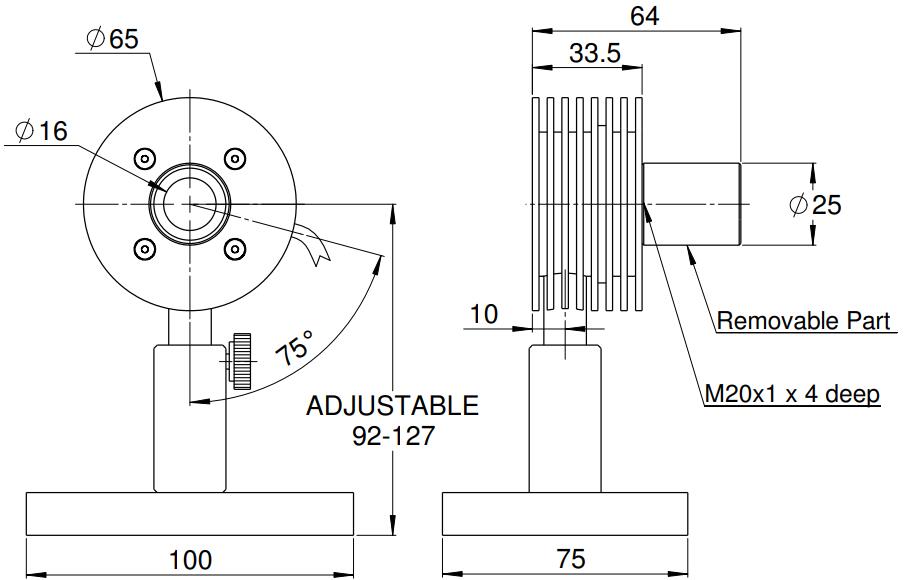Updated:2025-03-13
Views:1651
 WeChat
WeChat
 QQ
QQ
 Online Service
Online Service
The 10A-BB-16 is a general purpose thermal power/energy laser measurement sensor with a 16mm aperture. It can measure from 10mW to 10W and from 6mJ to 2J. It has the spectrally flat broadband coating and covers the spectral range from 0.19 to 11µm. The sensor comes with a standard 1.5 meter cable for connecting to a meter or PC interface.

| Absorber Type | Broadband |
| Aperture | Ø16mm |
| Spectral Range | 0.19-11µm |
| Power Range | 10mW-10W |
| Energy Range | 6mJ-2J |
| Dimensions | Ø65 W x 34 D (mm) |
| Max Pulse Energy | 2J |
| Max Average Power Density | 28kW/cm² |
| Response Time | 0.8 s |
| Max Energy Density (for <100ns) | 0.3J/cm² |
| Max Energy Density (for 2ms) | 2J/cm² |
| Max Average Power | 10W |
How does the ambient temperature affect the performance of the thermal sensor?
The water-cooled sensor is hardly affected by the ambient temperature, because the sensor temperature is determined by the water temperature. Ophir convection and fan cooling sensors are designed for continuous operation at high rated power in an ambient environment of 25 degrees Celsius. When operating at high rated power, the temperature of the sensor body should not normally exceed about 80 ℃.
Can the BeamTrack sensor be used to measure the position and size of the pulsed laser?
Because position and size are measured together with power, if the laser pulses at a rate at which the average power can be measured, then position and size can also be measured.
Does the injury threshold depend on the power level?
The damage threshold of the thermal sensor really depends on the power level, not just the power density, because the sensor disk itself will become hotter at high power. For example, the damage threshold of Ophir broadband coating may be 50KW/cm2at 10W, but only 10KW/cm2at 300W. Ophir's damage threshold specification is always given for the maximum power used by a particular sensor.
What does it mean that the spectral range is beyond the calibrated wavelength range?
The spectral range described at the beginning of the specification represents the range of wavelengths that the sensor can effectively use, even if no precise calibration is specified for that range. This means that the accuracy is specified and guaranteed within the calibrated wavelength range. In a wider range of useful wavelengths, the sensor can be used but its accuracy cannot be guaranteed. Generally speaking, within this wider range, the accuracy will be within ± 15%.
Must a specific sensor be used only with the instrument used when ordering?
Ophir instruments and sensors are calibrated independently. Each instrument has the same sensitivity as the other instrument, and the error is about 2%. Each sensor is calibrated independently of a specific instrument, and its calibration information is contained in the DB15 plug. When the sensor is connected to the instrument, the instrument will read and interpret this information. Since the accuracy of the sensor is usually+/- 3%, the additional 0.2% error that may result from inserting different instruments can be ignored, so it does not matter which calibration instrument is used for a specific calibrated sensor.
Customer Service QQ
Customer Hotline:
Technical Supports